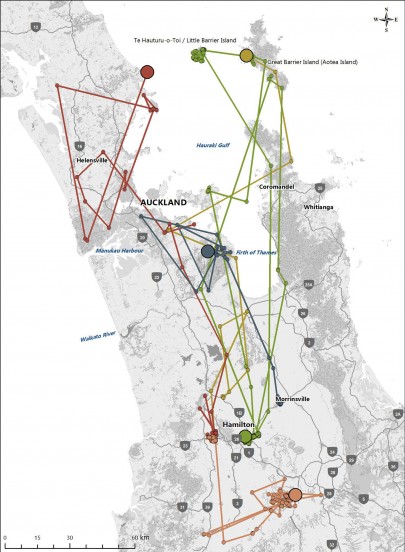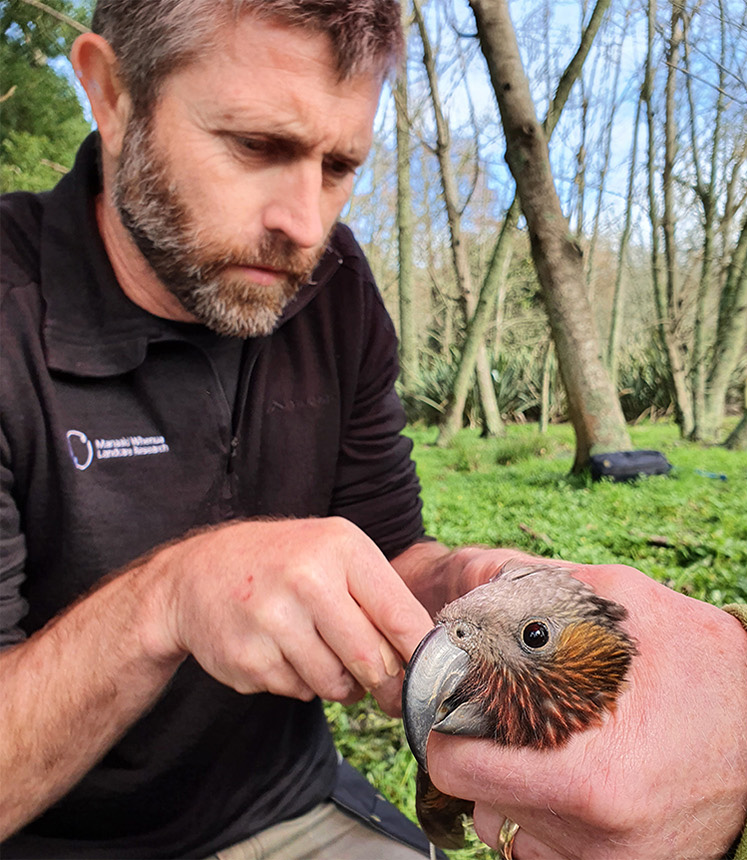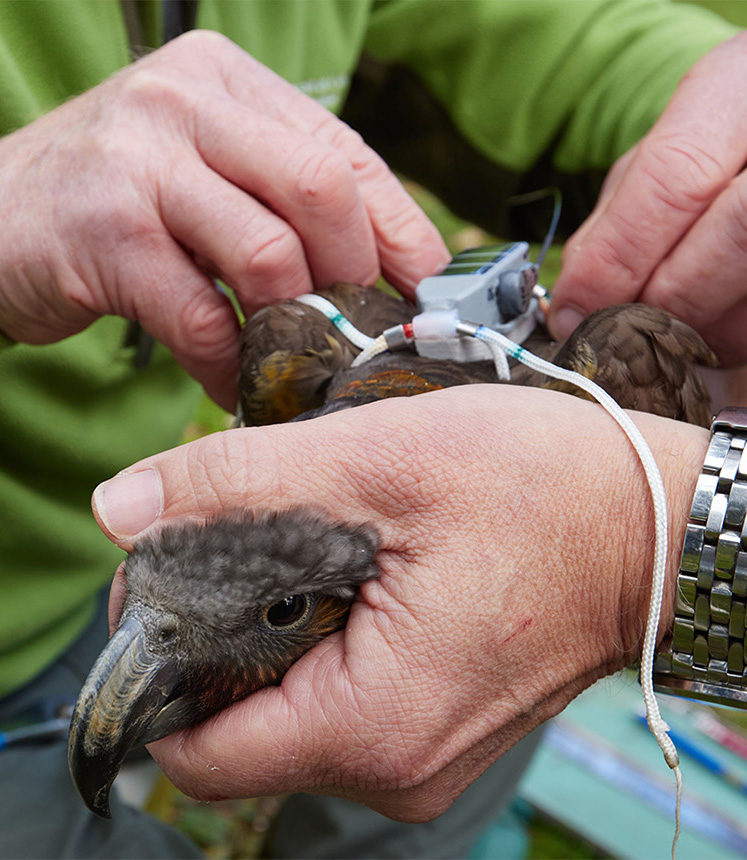Wandering Waikato kākā
Although forest loss has greatly reduced kākā habitat, their main contemporary threat is from stoats and, to a lesser degree, possums. Stoats not only kill chicks, but also females that cannot escape the nest cavity, and this can lead to male-biased populations, which may persist for decades, unable to breed and sliding towards local extinction. Kākā are most abundant on pest-free offshore islands such as Te Hauturu-o-Toi / Little Barrier Island and Kapiti Island, and in mainland ecosanctuaries such as the Waipapa Ecological Area at Pureora, but outside of these sites numbers are thought to be in general decline in both the North and South Islands. Understanding dispersal and seasonal movement of kākā beyond these areas is needed to develop more effective management prescriptions.
Kākā are usually associated with mature native forest and sites near their island strongholds, so highly modified rural Waikato is far from typical habitat. However, for many years during the winter non-breeding season, kākā have routinely visited sites near Hamilton and Morrinsville. Until recently the source of these birds has been a mystery. Before kākā were reintroduced to Maungatautari ecosanctuary in 2007 the nearest mainland breeding population was at Waipapa, 75 km south of Hamilton. Otherwise, offshore islands free of pest mammals, such as Little Barrier Island, Great Barrier Island, and Mayor Island / Tūhua are the nearest populations.

Figure 1. Long-distance movement of GPS-tagged North Island kākā captured around Hamilton between September 2020 and March 2021. Colours represent different birds. Logged locations are shown as small circles, and the last known location for each bird is a larger circle.
During September 2020 and July 2021 a team from MWLR and DOC fitted GPS and VHF tags to 25 kākā near Morrinsville and the outskirts of Hamilton. The VHF tags allow staff to track the birds on the ground for detailed observation of feeding and other behaviour. The solar-powered GPS tags send regular, accurate location data to the researchers, revealing movements over large scales and potentially long time periods. In the first year of the study GPS data were obtained from five tagged kākā for between 7 weeks and 6 months. This information showed they ranged over a few kilometres until October, when they began leaving the Waikato wintering sites and moved much larger distances, mostly north (Figure 1). Two kākā moved to Little Barrier and Great Barrier Island by early summer, and two more were last recorded at adjacent mainland sites. One of these birds travelled well over 1000 km – moving from Hamilton to Great Barrier Island, back to Hamilton, then to Little Barrier Island before returning to Hamilton – over a period of 19 weeks. Only one bird moved south from the capture location, spending summer near Maungatautari.
Observation of the tagged birds showed that they spent a lot of time within dense tree canopies, cryptically resting or stripping bark to feed on sap. The low light conditions in these situations proved challenging for the solar-powered GPS tags, but the researchers hope modifications made to the tags deployed in 2021 will help to extend their life. Future work will also begin to unravel the possible drivers of these seasonal movements. Are they pre-breeding youngsters, or breeding adults between nestings? Of the tagged birds, 60% were juvenile and 72% female. In many other birds a greater proportion of females and young migrate, possibly due to competition for food. Is seasonal food availability a driver of kākā movement too?
These results indicate that the spillover of kākā from pest-free islands and mainland ecosanctuaries can extend hundreds of kilometres to places where they face diverse new predation and non-predation threats.
This study will continue for another 2 years. The team will follow all tagged kākā, study their feeding at both ends of their travel routes, and try to resolve whether any of these travelling birds attempt to breed at their northern destinations, from where (presumably) they were fledged.



